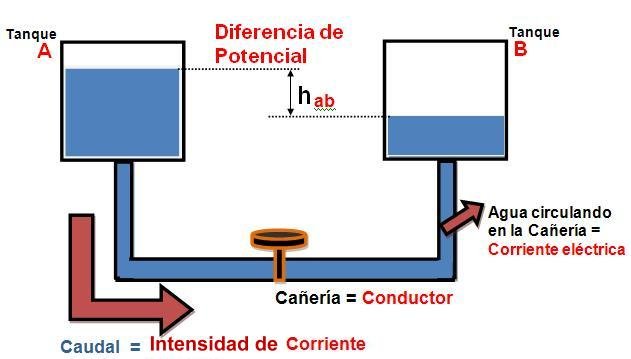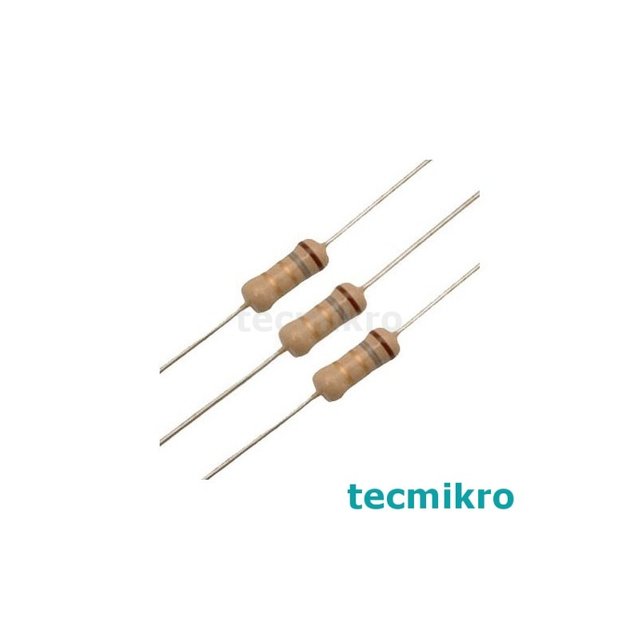ELECTRICITY CHAP: #2 (CONCEPT OF ELECTRIC POWER) Spanish / English
From the above we can deduce that the electrical energy is found is latent in all elements in the form of positive and negative electric charges, which can be manifested by the delivery of some other form of energy that exceeds probocando an accumulation of electrons, on the one hand and a lack of them on the other.
Therefore we can say that energy is what tends to form an ordered movement of electrons. Electric energy, like another type of energy, can not be created by man, but only obtained through the transformation of other forms of energy
Electric Voltage (Difference of Potential): Taking into account the difference of electrical energy we can say that it is an electron imbalance, since on the one hand we have a surplus and on the other a shortage of them. Therefore, we obtain a potential difference or __ Electric Tension__.
To speak of potential difference it is necessary to refer to elements or poles, that to find a difference there must be a comparison of one element with respect to another. The unit of measure is VOLT (V) and is represented by the letter V.

Electric Resistance: Due to the composition of the atoms in each element, according to its type it offers a certain degree of resistivity, since the electrons are strongly bound to the nucleus of the atom, therefore the material will be more or less conductive of the current electric
In a few words the electrical resistance is the impediment of the passage of the current depending on each element. For example the plastic offers great resistance to the current since in its chemical composition its electrons are attracted more strongly by the nucleus and that prevents that free electrons are generated that can be taken by other atoms and thus produce a flow of current (cap #1). Its unit of measure is the OHM (Ω) and is represented by the letter R.

The electric current described in chapter # 1 whose unit of measurement is AMPER (A) and is represented by the letter A.
=============================================================================
De lo dicho anteriormente podemos deducir que la energía eléctrica se encuentra se encuentra latente en todos los elementos bajo la forma de cargas eléctricas positivas y negativas, las cuales pueden llegar a manifestarse mediante la entrega de alguna otra forma de energía que la supere probocando una acumulación de electrones, por un lado y un faltante de los mismos por el otro.
Por lo tanto podemos decir que la energía es la que tiende a formar un movimiento ordenado de electrones. La energía eléctrica, como otro tipo de energía no puede ser creada por el hombre, sino solamente obtenida mediante la transformación de otras formas de energía.
Tensión Eléctrica (Diferencia de Potencial): Teniendo en cuenta la diferencia de energia electrica podemos decir que la misma es un desequilibrio de electrones, dado que por un lado tenemos un sobrante y por el otro un faltante de los mismos. Por lo cual obtenemos una diferencia de potencial o Tensión Eléctrica.
Para hablar de diferencia de potencial es necesario referirse a elementos o polos, que para encontrar una diferencia debe existir una comparación de un elemento respecto a otro. La unidad de medida es VOLT (V) y se representa con la letra V .

Resistencia Eléctrica: Debido a la composición de los átomos en cada elemento, segun su tipo ofrece sierto grado de resistividad, ya que los electrones se encuentran fuertemente ligados al núcleo del átomo, por lo tanto el material sera mas o menos conductor de la corriente eléctrica.
En pocas palabras la resistencia eléctrica es el impedimento del paso de la corriente dependiendo de cada elemento. Por ejemplo el plástico ofrece gran resistencia a la corriente ya que en su composición química sus electrones se encuentran atraídos mas fuertemente por el núcleo y eso impide que se generen electrones libres que puedan ser tomados por otros átomos y asi producir un flujo de corriente (cap #1). Su unidad de medida es el OHM (Ω) y se representa con la letra R.

La corriente eléctrica descrita en el cap # 1 cuya unidad de medida es el AMPER (A) y se representa con la letra A.